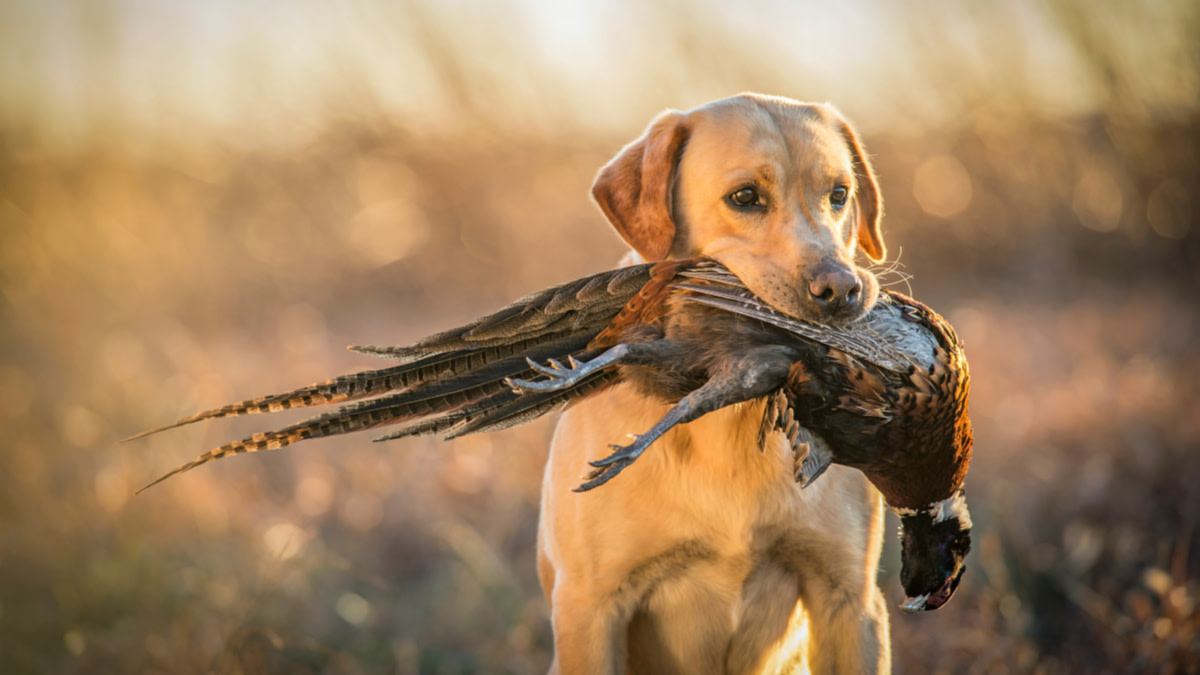
Ferg is working the field when—as if a string was attached to his nose—he whips around and locks on point. I creep past him awaiting the flush, and a rooster erupts at my feet. The report sounds from the right barrel of my 20-gauge side-by-side and the rooster falls. A quick retrieve to hand from the pup and we’re off to the next. Another rooster and a sharptail grouse fall by the end of the day.
I bought a German Wirehair puppy near the end of fall 2018. These dogs are known as a versatile breed that are proficient in multiple styles of hunting. Being an avid waterfowler and an upland bird hunter, I knew I wanted a dog that could do both. I picked a good litter with quality genetics, but knew I’d have to put in a lot of time for a successful first season.
Obedience Training
Obedience training is where it all starts. As soon as the pup came home, the training began. I used scheduled training times, but the majority of lessons came from around-the-clock discipline.
It’s necessary to make your dog respect verbal commands. Training should focus on verbal commands over all else at the beginning, which means enforcing every command you give. For example, if you give your pup a recall command—typically “here” or “come”—and they don’t come to you, it’s your responsibility to get them and bring them to the spot the command was given. If the dog thinks the rules are flexible, they might not follow them when it matters most.
I kept the obedience training completely void of an e-collar until Ferg was six months old. I’m a firm believer that the collar should only be used as reinforcement. Voice commands need to be completely respected before collar conditioning can begin.
During this time, it’s important to spend time socializing your pup. I spent countless hours running him with other dogs. This allowed him to learn manners and respect other dogs, an important trait when hunting with friends and their bird dogs.
Training Over Birds
Once I was confident in his obedience training, it was time for birds. After all, it’s birds that make the bird dog. I joined a gun dog training club and received my dog training permit from Montana Fish, Wildlife & Parks. This allows me and other members to use pen-raised game birds for drills.
This form of training helped my pup unlock his prey drive and learn proper field behavior. I was able to watch how he acted in the field—training myself to respond to his actions, as well reinforcing what his instincts tell him. Training like this allows for you to get your dog excited about live birds and bird scent before the season begins.
Having the ability to use pen-raised birds exponentially increased my dog’s hunting ability. Everything from introduction to shot to holding long points was made easier by the live decoys.
The time and focus on training throughout the year inspired confidence for opening weekend of bird season. My pup confidently pointed a sage grouse at 30 yards, made a retrieve on a sharptail that soared more than 100 yards, and pointed a covey of Hungarian partridge while retrieving one that was already shot. It was a great success.
Time in the Field
Once you put in the time to train an obedient dog and work on pen-raised birds, it’s time for wild birds. Solidifying offseason training requires a lot of days afield.
Every time your dog gets out, their ability as a hunter increases. As someone who loves big game, it was hard to take days away from elk and deer to focus on upland birds. But it was a necessity for the development of Ferg. Those first fall lessons will make a difference.
“You can’t teach an old dog new tricks” isn’t really a hard rule, but there’s some truth to this old adage. Although older dogs are smarter and more attuned, younger dogs are usually more eager to learn and do drills.
You should take any chance to be in the field. All the successful flushes—along with all the blown shots—are great lessons that can’t be replicated anywhere else.
Having a great first season largely comes down to one thing: time. Take the time to train, learn, and hunt with your dog, and your season will be a success. My first fall ended with nine different game bird species taken over Ferg. The result was a plethora of delicious meat in the freezer and a bond with my pup that will never be broken.
Feature image via John Hafner.





Conversation